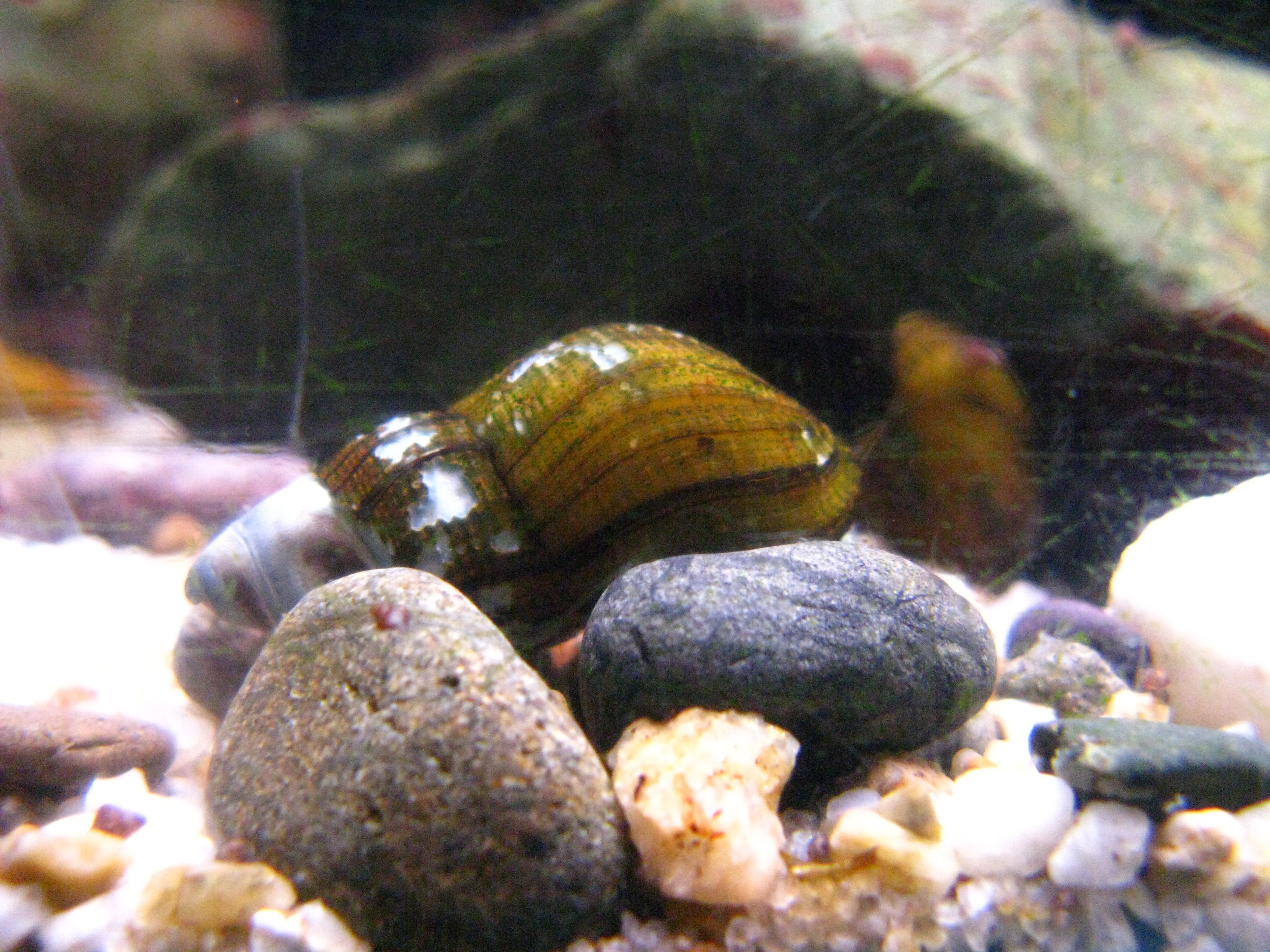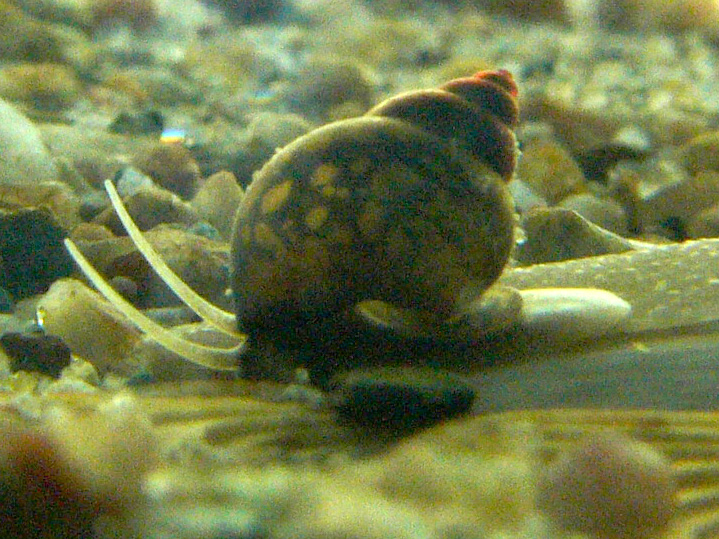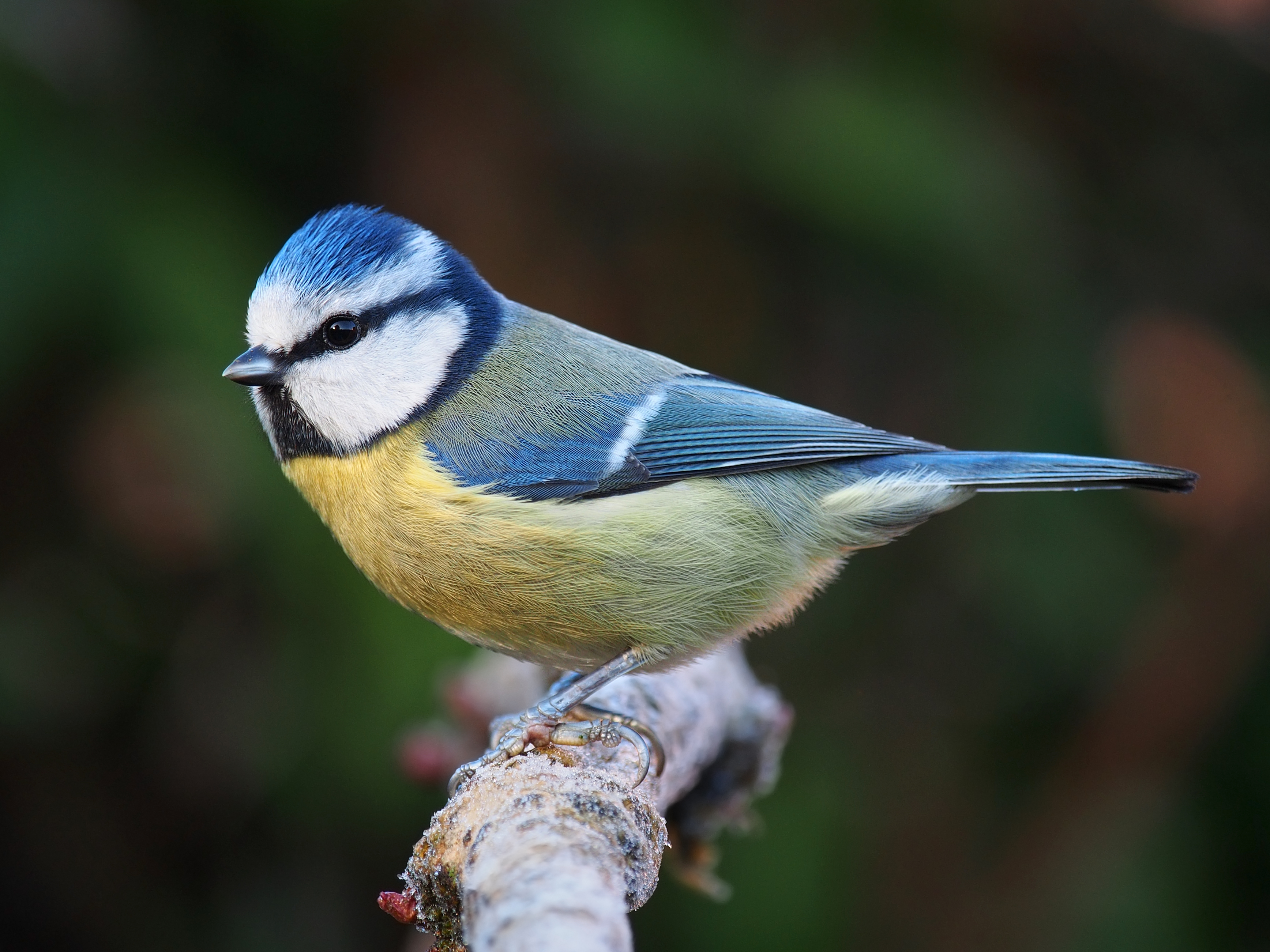|
Semisulcospira Kurodai
''Semisulcospira kurodai'' is a species of freshwater snail with an operculum, an aquatic gastropod mollusk in the family Semisulcospiridae. Prior to 2009, this species was classified in the family Pleuroceridae. Distribution This species occurs in Japan. Description The maximum width of the shell of ''Semisulcospira kurodai'' is and in height in the laboratory. The maximum weight of the animal is in the laboratory. The width of the shell is in the first year, in the second year, in the third year and in the fourth year in the laboratory. The diploid chromosome number of ''Semisulcospira kurodai'' is 2n=35 and 2n=36 (both chromosome numbers were observed).Davis G. M. (1969). "A taxonomic study of some species of ''Semisulcospira'' in Japan (Mesogastropoda: Pleuroceridae)". ''Malacologia ''Malacologia'' is a peer-reviewed scientific journal in the field of malacology, the study of mollusks. The journal publishes articles in the fields of molluscan systematics, ... [...More Info...] [...Related Items...] OR: [Wikipedia] [Google] [Baidu] |
Aquarium
An aquarium (plural: ''aquariums'' or ''aquaria'') is a vivarium of any size having at least one transparent side in which aquatic plants or animals are kept and displayed. Fishkeepers use aquaria to keep fish, invertebrates, amphibians, aquatic reptiles, such as turtles, and aquatic plants. The term ''aquarium'', coined by English naturalist Philip Henry Gosse, combines the Latin root , meaning 'water', with the suffix , meaning 'a place for relating to'. The aquarium principle was fully developed in 1850 by the chemist Robert Warington, who explained that plants added to water in a container would give off enough oxygen to support animals, so long as the numbers of animals did not grow too large. The aquarium craze was launched in early Victorian England by Gosse, who created and stocked the first public aquarium at the London Zoo in 1853, and published the first manual, ''The Aquarium: An Unveiling of the Wonders of the Deep Sea'' in 1854.Katherine C. Grier (2008) ... [...More Info...] [...Related Items...] OR: [Wikipedia] [Google] [Baidu] |
Operculum (gastropod)
The operculum (; ) is a corneous or calcareous anatomical structure like a trapdoor that exists in many (but not all) groups of sea snails and freshwater snails, and also in a few groups of land snails; the structure is found in some marine and freshwater gastropods, and in a minority of terrestrial gastropods, including the families Helicinidae, Cyclophoridae, Aciculidae, Maizaniidae, Pomatiidae, etc. The operculum is attached to the upper surface of the foot and in its most complete state, it serves as a sort of "trapdoor" to close the aperture of the shell when the soft parts of the animal are retracted. The shape of the operculum varies greatly from one family of gastropods to another. It is fairly often circular, or more or less oval in shape. In species where the operculum fits snugly, its outline corresponds exactly to the shape of the aperture of the shell and it serves to seal the entrance of the shell. Many families have opercula that are reduced in size, and which a ... [...More Info...] [...Related Items...] OR: [Wikipedia] [Google] [Baidu] |
Malacologia
''Malacologia'' is a peer-reviewed scientific journal in the field of malacology, the study of mollusks. The journal publishes articles in the fields of molluscan systematics, ecology, population ecology, genetics, molecular genetics, evolution, and phylogenetics. The journal specializes in publishing long papers and monographs. The journal publishes at least one, sometimes two, volumes of about 400 pages per year, which may consist of 1 or 2 issues. According to the ''Journal Citation Reports,'' its 2019 impact factor The impact factor (IF) or journal impact factor (JIF) of an academic journal is a scientometric index calculated by Clarivate that reflects the yearly mean number of citations of articles published in the last two years in a given journal, as ... is 13.5. This ranks ''Malacologia'' 1st out of 145 listed journals in the category "Zoology". The journal started publication in 1962. See also *'' Archiv für Molluskenkunde'' *'' Basteria'' *'' Journal of Concholo ... [...More Info...] [...Related Items...] OR: [Wikipedia] [Google] [Baidu] |
Chromosome Number
Ploidy () is the number of complete sets of chromosomes in a cell, and hence the number of possible alleles for autosomal and pseudoautosomal genes. Sets of chromosomes refer to the number of maternal and paternal chromosome copies, respectively, in each homologous chromosome pair, which chromosomes naturally exist as. Somatic cells, tissues, and individual organisms can be described according to the number of sets of chromosomes present (the "ploidy level"): monoploid (1 set), diploid (2 sets), triploid (3 sets), tetraploid (4 sets), pentaploid (5 sets), hexaploid (6 sets), heptaploid or septaploid (7 sets), etc. The generic term polyploid is often used to describe cells with three or more chromosome sets. Virtually all sexually reproducing organisms are made up of somatic cells that are diploid or greater, but ploidy level may vary widely between different organisms, between different tissues within the same organism, and at different stages in an organism's life cycle. H ... [...More Info...] [...Related Items...] OR: [Wikipedia] [Google] [Baidu] |
List Of Non-marine Molluscs Of Japan
The non-marine molluscs of Japan are a part of the molluscan fauna of Japan (wildlife of Japan). A number of species of non-marine molluscs are found in the wild in Japan. Extinct gastropods in Japan include: '' Vitrinula chaunax'', '' Vitrinula chichijimana'', '' Vitrinula hahajimana''. Freshwater gastropods Pomatiopsidae * ''Oncomelania hupensis'' Gredler, 1881Zhao Q. P., Jiang M. S., Littlewood D. T. J. & Nie P. (2010). "Distinct Genetic Diversity of ''Oncomelania hupensis'', Intermediate Host of ''Schistosoma japonicum'' in Mainland China as Revealed by ITS Sequences". '' PLoS Neglected Tropical Diseases'' 4(3): e611. . Thiaridae * '' Melanoides tuberculata'' (O. F. Müller, 1774) Acroloxidae * ''Acroloxus orientalis'' Kruglov et Starobogatov, 1991 Land gastropods Land gastropods in Japan include: Cyclophoridae * ''Cyclophorus herklotsi'' Martens, 1861DO Duc Sang, DO Van Nhuong (2019). "Family Cyclophoridae in Vietnam (Gastropoda: Cyclophoroidea): the genus ... [...More Info...] [...Related Items...] OR: [Wikipedia] [Google] [Baidu] |
Semisulcospira Kurodai1
''Semisulcospira'' is a genus of freshwater snails with an operculum, an aquatic gastropod mollusks in the family Semisulcospiridae. MolluscaBase eds. (2022). MolluscaBase. Semisulcospira O. Boettger, 1886. Accessed through: World Register of Marine Species at: https://www.marinespecies.org/aphia.php?p=taxdetails&id=741120 on 2022-05-23 Species in the genus ''Semisulcospira'' are viviparous.Strong E. & Köhler F. (2009). "Morphological and molecular analysis of "''Melania''" ''jacqueti'' Dautzenberg & Fischer, 1906: from anonymous orphan to critical basal offshoot of the Semisulcospiridae (Gastropoda: Cerithioidea)". ''Zoologica Scripta'' 38(5): 483-502. Species Species within the genus ''Semisulcospira'' include: * '' Semisulcospira arenicola'' Watanabe & Nishino, 1995 * ''Semisulcospira calculus'' (Reeve, 1859) * '' Semisulcospira coreana'' (Martens, 1886) * '' Semisulcospira crassicosta'' Y.-Y. Liu, Y.-X. Wang & Y.-H. Duan, 1994 * '' Semisulcospira davisi'' Sawada & Na ... [...More Info...] [...Related Items...] OR: [Wikipedia] [Google] [Baidu] |
Pleuroceridae
Pleuroceridae, common name pleurocerids, is a family of small to medium-sized freshwater snails, aquatic gilled gastropod mollusks in the superfamily Cerithioidea.These snails have an operculum and typically a robust high-spired shell. Reproduction is iteroparous, and juvenile snails emerge from eggs laid on a firm surface by a gonochoristic female. There is no veliger stage. Distribution As currently defined, this family is confined entirely to eastern North American fresh waters. Similar snails formerly classified with Pleuroceridae, but now assigned to other families are widespread in temperate and tropical parts of Southern and Eastern Asia, and Africa. Most require unpolluted rivers and streams, but a few are adapted to living in lakes or reservoirs. Taxonomy 2005 taxonomy The following two subfamilies have been recognized in the taxonomy of Bouchet & Rocroi (2005): * Pleurocerinae P. Fischer, 1885 - synonyms: Ceriphasiinae Gill, 1863; Strepomatidae Haldeman, 1864; ... [...More Info...] [...Related Items...] OR: [Wikipedia] [Google] [Baidu] |
Mollusk
Mollusca is the second-largest phylum of invertebrate animals after the Arthropoda, the members of which are known as molluscs or mollusks (). Around 85,000 extant species of molluscs are recognized. The number of fossil species is estimated between 60,000 and 100,000 additional species. The proportion of undescribed species is very high. Many taxa remain poorly studied. Molluscs are the largest marine phylum, comprising about 23% of all the named marine organisms. Numerous molluscs also live in freshwater and terrestrial habitats. They are highly diverse, not just in size and anatomical structure, but also in behaviour and habitat. The phylum is typically divided into 7 or 8 taxonomic classes, of which two are entirely extinct. Cephalopod molluscs, such as squid, cuttlefish, and octopuses, are among the most neurologically advanced of all invertebrates—and either the giant squid or the colossal squid is the largest known invertebrate species. The ... [...More Info...] [...Related Items...] OR: [Wikipedia] [Google] [Baidu] |
Gastropod
The gastropods (), commonly known as snails and slugs, belong to a large taxonomic class of invertebrates within the phylum Mollusca called Gastropoda (). This class comprises snails and slugs from saltwater, from freshwater, and from land. There are many thousands of species of sea snails and slugs, as well as freshwater snails, freshwater limpets, and land snails and slugs. The class Gastropoda contains a vast total of named species, second only to the insects in overall number. The fossil history of this class goes back to the Late Cambrian. , 721 families of gastropods are known, of which 245 are extinct and appear only in the fossil record, while 476 are currently extant with or without a fossil record. Gastropoda (previously known as univalves and sometimes spelled "Gasteropoda") are a major part of the phylum Mollusca, and are the most highly diversified class in the phylum, with 65,000 to 80,000 living snail and slug species. The anatomy, behavior, feeding, a ... [...More Info...] [...Related Items...] OR: [Wikipedia] [Google] [Baidu] |
Freshwater Snail
Freshwater snails are gastropod mollusks which live in fresh water. There are many different families. They are found throughout the world in various habitats, ranging from ephemeral pools to the largest lakes, and from small seeps and springs to major rivers. The great majority of freshwater gastropods have a shell, with very few exceptions. Some groups of snails that live in freshwater respire using gills, whereas other groups need to reach the surface to breathe air. In addition, some are amphibious and have both gills and a lung (e.g. '' Ampullariidae''). Most feed on algae, but many are detritivores and some are filter feeders. According to a 2008 review of the taxonomy, there are about 4,000 species of freshwater gastropods (3,795–3,972). At least 33–38 independent lineages of gastropods have successfully colonized freshwater environments. It is not possible to quantify the exact number of these lineages yet, because they have yet to be clarified within the Ce ... [...More Info...] [...Related Items...] OR: [Wikipedia] [Google] [Baidu] |
Animalia
Animals are multicellular, eukaryotic organisms in the biological kingdom Animalia. With few exceptions, animals consume organic material, breathe oxygen, are able to move, can reproduce sexually, and go through an ontogenetic stage in which their body consists of a hollow sphere of cells, the blastula, during embryonic development. Over 1.5 million living animal species have been described—of which around 1 million are insects—but it has been estimated there are over 7 million animal species in total. Animals range in length from to . They have complex interactions with each other and their environments, forming intricate food webs. The scientific study of animals is known as zoology. Most living animal species are in Bilateria, a clade whose members have a Symmetry in biology#Bilateral symmetry, bilaterally symmetric body plan. The Bilateria include the protostomes, containing animals such as nematodes, arthropods, flatworms, annelids and molluscs, and th ... [...More Info...] [...Related Items...] OR: [Wikipedia] [Google] [Baidu] |
Species
In biology, a species is the basic unit of Taxonomy (biology), classification and a taxonomic rank of an organism, as well as a unit of biodiversity. A species is often defined as the largest group of organisms in which any two individuals of the appropriate sexes or mating types can reproduction, produce Fertility, fertile offspring, typically by sexual reproduction. Other ways of defining species include their karyotype, DNA sequence, morphology (biology), morphology, behaviour or ecological niche. In addition, paleontologists use the concept of the chronospecies since fossil reproduction cannot be examined. The most recent rigorous estimate for the total number of species of eukaryotes is between 8 and 8.7 million. However, only about 14% of these had been described by 2011. All species (except viruses) are given a binomial nomenclature, two-part name, a "binomial". The first part of a binomial is the genus to which the species belongs. The second part is called the specifi ... [...More Info...] [...Related Items...] OR: [Wikipedia] [Google] [Baidu] |


_torquata_002.jpg)






